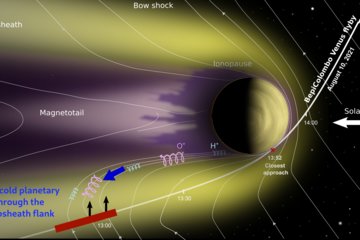Hydrogen Deuterium Absorption Cell (HDAC)
HDAC measures resonant scattered solar Lyman-alpha radiation to determine the Hydrogen to Deuterium ratio of Saturn's and Titan's atmospheres.
HDAC instrument description

MPS has built a Lyman Alpha photometer for the Cassini mission to Saturn. The instrument is a Hydrogen Deuterium Absorption Cell (HDAC). The HDAC represents a cooperative effort between the Max Planck Institute for Solar System Research in Lindau, Germany, and the Laboratory for Atmospheric and Space Physics (LASP) at the university of Colorado in Boulder. The HDAC is integrated into CU's Cassini UVIS instrument package. MPS is responsible for the design and contruction of the instrument, and LASP is responsible for the instrument electronics.
How the HDAC Works

The HDAC is a photometer designed to measure the D and H Lyman Alpha lines (at 121.53 nm and 121.57 nm). It is capable of measuring the shapes of these two lines and the atomic D/H ratio on Titan and Saturn. The instrument consists of a UV detector equipped with gas filled Hydrogen and Deuterium cells, an O2 filter, and a light baffle. The H and D cells contain tungsen filaments. When power is applied to the filaments they dissociate the H2 and D2 molecules into single atoms, which resonantly absorb D and H Lyman Alpha. By changing the temperature of these filaments, a tunable set of filters is created. The O2 cell was designed to filter out unwanted signals near Lyman Alpha.
The detector is a ceramic channel electron multiplier. It was developed at the MPS by Hans Lauche.

HDAC investigators
The analysis of the HDAC data is done by scientists at the Max Planck Institute for Solar System Research (MPS) in Lindau, and by scientists at the Institute of Space Sensor Technology and Planetary Exploration at the DLR, in Berlin.














